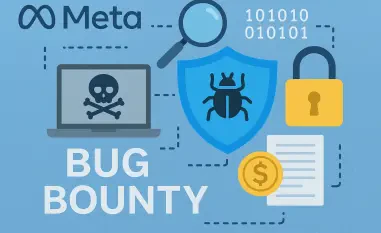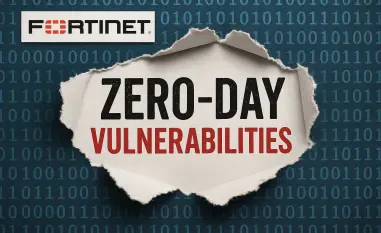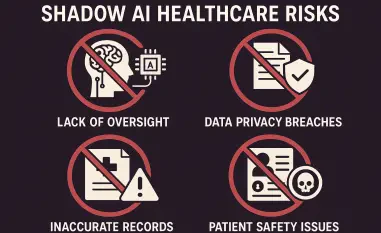In today’s digital landscape, where cyber threats strike with alarming frequency, organizations face an unprecedented challenge: a single breach can cost millions in damages and erode trust overnight, leaving lasting impacts on reputation and operations. Imagine a multinational corporation waking up to find its sensitive data leaked on the dark web or a small business crippled by ransomware infiltrating through an employee’s laptop. These scenarios underscore the urgent need for robust cybersecurity measures. Two critical approaches stand at the forefront of this battle—endpoint security and external threat monitoring. While both aim to safeguard organizations, they tackle the problem from distinct angles, offering unique strengths and addressing different vulnerabilities. This comparison delves into their core differences, functionalities, and challenges to help organizations navigate the complex terrain of cyber defense in an era of relentless attacks.
Key Differences in Approach and Functionality
Focus and Scope of Protection
Endpoint security zeroes in on protecting individual devices—laptops, desktops, mobile phones, and servers—that serve as entry points into an organization’s network. Its primary mission is to shield these assets from internal and external threats, such as malware or unauthorized access, by deploying tools like antivirus software and endpoint detection and response (EDR) systems. The emphasis here is on fortifying the internal environment, ensuring that each device remains a secure node within the broader infrastructure.
In stark contrast, external threat monitoring casts a wider net, focusing on risks originating beyond an organization’s direct control. This approach involves tracking activities on the dark web, identifying brand impersonation attempts, and assessing supply chain vulnerabilities. By gathering intelligence on potential threats before they strike, it aims to provide a preemptive understanding of the external threat landscape, often targeting sophisticated campaigns like nation-state attacks that may not immediately manifest within the network.
The divergence in scope highlights a fundamental distinction: endpoint security acts as a gatekeeper at the device level, managing risks within the perimeter, while external threat monitoring serves as a sentinel, scanning the horizon for dangers that have yet to approach the walls. This difference shapes how each strategy fits into an organization’s overall defense posture, with one guarding the interior and the other anticipating external maneuvers.
Technology and Methodologies
Technologically, endpoint security relies on advanced tools such as AI-driven EDR platforms and machine learning algorithms to detect anomalies in real time. These systems often integrate with Security Information and Event Management (SIEM) solutions to provide a comprehensive view of device activity, identifying threats like ransomware through behavioral analysis. Solutions like CrowdStrike’s Falcon platform exemplify this approach, embedding lightweight agents on devices to ensure minimal performance impact while delivering robust protection.
External threat monitoring, on the other hand, harnesses vast global datasets and cloud-based intelligence to predict and identify risks outside the network. Methodologies include dark web scanning, predictive analytics, and third-party data feeds, with platforms like Recorded Future’s Intelligence Graph mapping out threat patterns across cyber and geopolitical domains. Unlike endpoint security, this strategy does not require device-level installation but instead depends on external data aggregation to build a picture of looming dangers.
Implementation further sets them apart—endpoint security demands meticulous deployment across diverse devices, often requiring updates and compatibility checks, whereas external threat monitoring operates largely in the cloud, focusing on analysis rather than direct intervention. This contrast in technical frameworks reveals how each approach aligns with different operational priorities, from on-the-ground defense to strategic foresight.
Effectiveness Across Threat Types
When pitted against specific cyber threats, endpoint security shines in combating internal risks. It excels at neutralizing ransomware, phishing attacks, and insider threats by directly protecting devices through real-time monitoring and response mechanisms. For instance, an EDR system can isolate a compromised laptop to prevent malware from spreading across a network, addressing breaches as they occur within the organization.
Conversely, external threat monitoring proves more effective against complex, externally orchestrated threats like advanced persistent threats (APTs) and supply chain attacks. By providing visibility into attack vectors originating outside the network—such as a vendor’s compromised system or a dark web data leak—it enables organizations to prepare for risks that endpoint tools might not detect until it’s too late. This capability is vital for industries like finance or government, which face heightened exposure to geopolitical cyber campaigns.
However, each has its blind spots: endpoint security may miss broader external intelligence that hasn’t yet impacted a device, while external threat monitoring cannot directly mitigate a breach once it penetrates a network. A real-world example, such as a supply chain attack bypassing device-level defenses, illustrates the need for complementary strategies to cover all bases against multifaceted threats.
Challenges and Limitations of Each Strategy
Endpoint security implementation often grapples with the complexity of managing a diverse array of devices, especially in environments with Bring Your Own Device (BYOD) policies. Ensuring consistent software updates and patches across thousands of endpoints can strain IT resources, while security agents sometimes slow down device performance, frustrating end users. Large-scale deployments amplify these issues, requiring constant oversight to prevent gaps in coverage.
Additionally, endpoint security faces challenges in scalability and adaptability. As organizations grow or adopt new technologies, maintaining uniform protection across hybrid or remote work setups becomes a logistical hurdle. The demand for skilled personnel to configure and monitor these systems adds another layer of difficulty, particularly for smaller businesses with limited budgets.
External threat monitoring, meanwhile, encounters obstacles in translating intelligence into actionable defense. While it excels at identifying potential risks, bridging the gap between external data and internal response mechanisms often proves challenging, requiring seamless integration with other security tools. The high cost of accessing comprehensive datasets and the risk of false positives in predictive models further complicate its adoption, especially for resource-constrained entities.
Moreover, the effectiveness of external threat monitoring can be hampered by the sheer volume of data it processes. Sifting through noise to pinpoint genuine threats demands expertise, and without proper context, organizations might waste resources chasing irrelevant alerts. Budget constraints also play a role, as smaller firms may struggle to justify the expense of premium intelligence platforms despite their value in preempting attacks.
A shared challenge for both approaches lies in the need for skilled personnel and integration with broader security frameworks like zero-trust architectures. Balancing cost with capability remains a persistent concern, particularly for small-to-medium businesses (SMBs) that lack the financial flexibility of larger enterprises. These common hurdles underscore the importance of strategic planning when deploying either solution.
Conclusion and Recommendations for Implementation
Looking back, the exploration of endpoint security and external threat monitoring revealed their distinct yet complementary roles in cybersecurity. Endpoint security stood as a steadfast shield for devices, tackling internal threats with precision, while external threat monitoring acted as a vigilant scout, uncovering risks beyond the network’s edge. Their differences in focus, technology, and effectiveness painted a clear picture of specialized strengths tailored to diverse threat landscapes.
Moving forward, organizations should assess their specific needs to determine the best path. Those prioritizing device protection and rapid internal response might lean toward endpoint security solutions like CrowdStrike’s offerings, ensuring robust defense at the ground level. Conversely, entities with high exposure to external risks, such as government bodies or financial institutions, could benefit more from external threat monitoring platforms like LookingGlass Cyber Solutions to anticipate sophisticated campaigns.
A hybrid approach, however, emerged as the most prudent step for many. By integrating both strategies, businesses can create a layered defense—combining direct protection with strategic intelligence to address vulnerabilities comprehensively. Investing in training for staff and exploring scalable solutions will be crucial to maximize these tools’ impact. As cyber threats continue to evolve, adapting this balanced model offers a dynamic way to stay ahead, ensuring resilience against an ever-shifting array of dangers.













